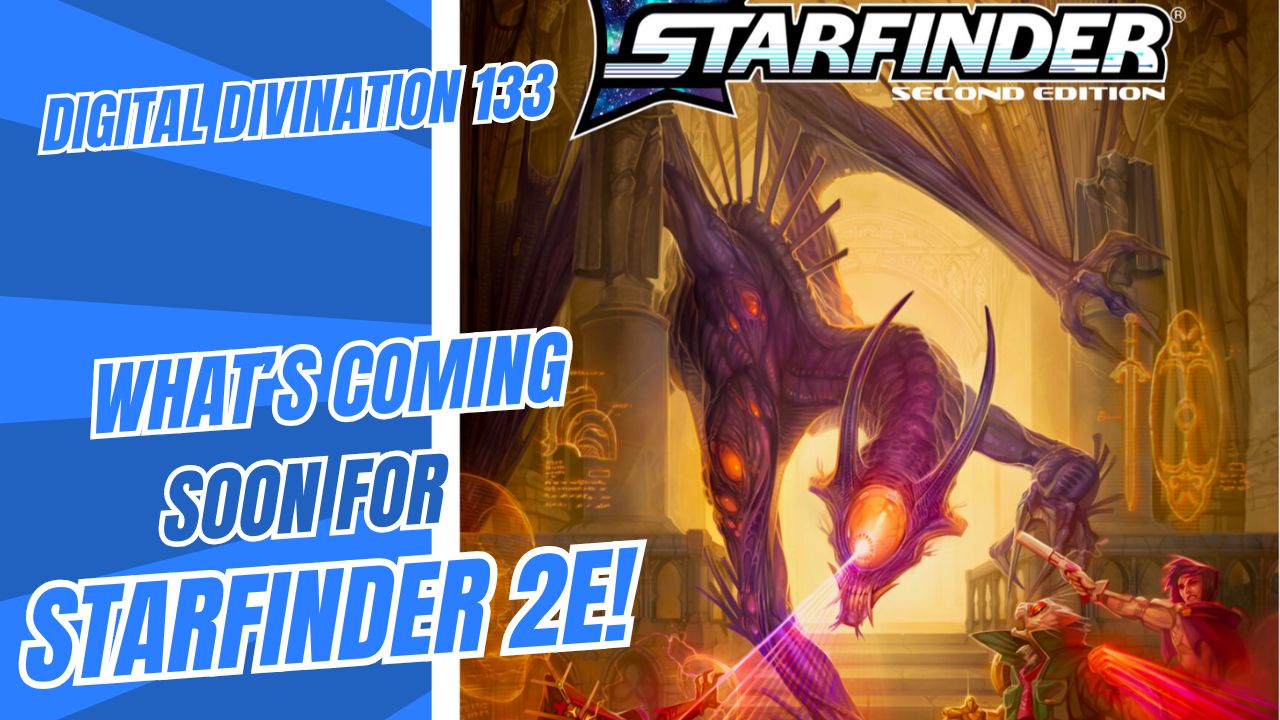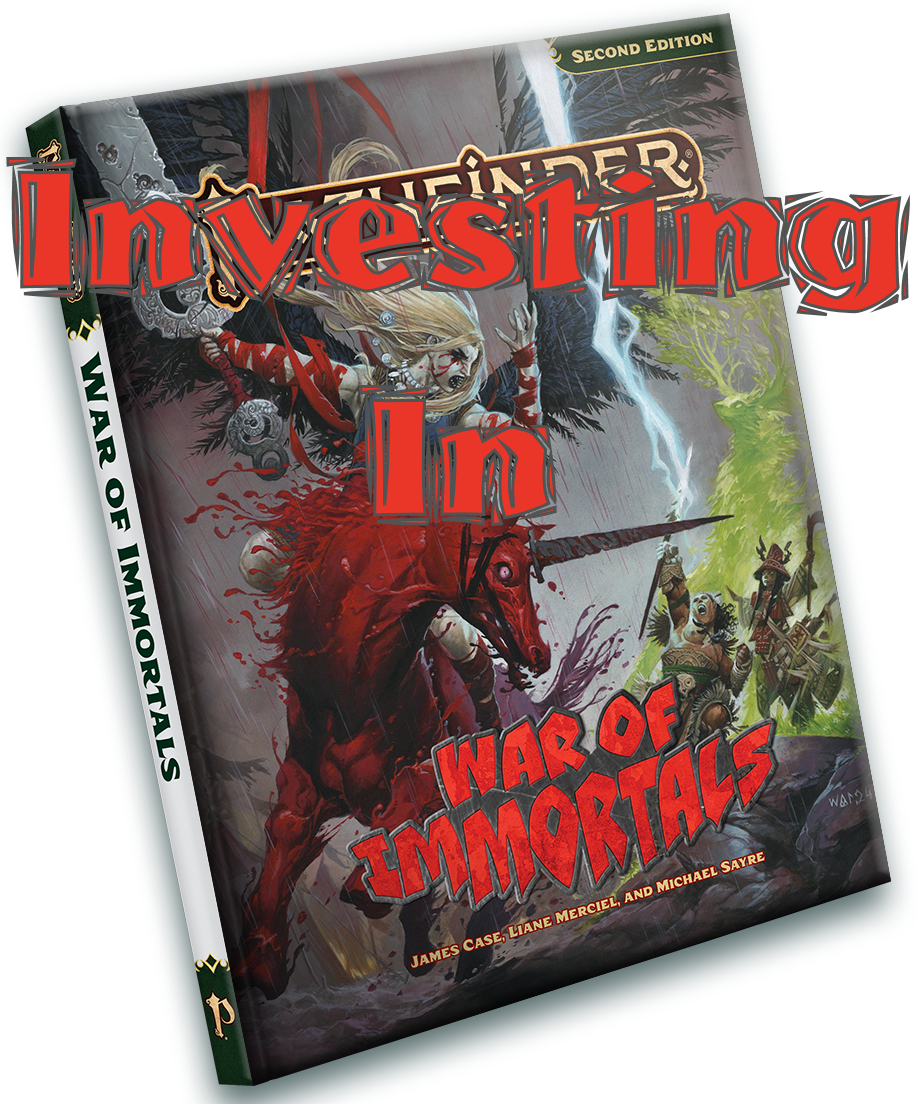The Races Of series started with a bang. Races of Stone proved that Dungeons & Dragons had room for sourcebooks that were more focused on fleshing out information than new rules and options. The third installment, Races of the Wild, would be the highlight of the series. But between those two books exploring the fantasy genres most exotic denizens, we had the Races of Destiny. Humans. Half-elves. Half-orcs. Illumians. Mixing the blandest with the strangest, Races of Destiny is the series low. But does it still have enough redeeming qualities to be worth a purchase?
At a Glance
It’s strange how much I love the format of the Races Of series covers and yet feel neutral towards the artwork. Races of Destiny is my least favourite (which you’ll find to be the theme of this review). At a glance it’s a nice group in front of a vast city, with fantastic colour triangulation and highlights (note how the pattern on the left-hand archway matches the accents of both the illumian and the half-orc). After a closer look, there’s really nothing I like but the scenery. The half-elf doesn’t look distant from the foreground, just small, like a pointy-eared Halfling. The illumian does not leave a good first impression, wearing armour that can only be described as pounches of flour. Inside you’ll find out that this race excels at multi-classing, which might explain why it looks nothing like any class in any sourcebook. And even though I don’t mind the make-up, this is the first illumian anyone has ever seen. Shouldn’t it be a generic example of the race? The half-orc on the cover used to be the only character I liked. Dressed against type as either a good cleric or a paladin, two classes the half-orc works surprisingly well at, this proud crusader wears his golden armour handsomely. Then I noticed something. From the waist down, he’s inarticulate, like a chess piece. I guess it’s some kind of robe, but it really looks like he has a shapeless pillar for a lower body. What is close to being a great cover is made mediocre by poor detailing and the embodiment of D&D What Not To Wear.
But who am I to judge a book by its cover. There is some fine artwork within. Like Monte Michael Moore’s Half-Elf Arts and Crafts on page 35, which uses vibrant colours to show a half-elf focused on the harp she’s making (or the craziest longbow D&D has ever seen). And an entry in the half-orc shop-keeper theme (I can’t explain it, but there are at least five other amusing illustrations published in D&D sourcebooks depicting a half-orc shop-keeper), Jim Nelson’s Half-Orc Bouncer on page 46 stands guard outside Sal’s Place, with a sign trying to let everyone know what will happen to their weapons.
As much as I harp on the illumians for being so strange, they do lend themselves to really nice artwork. Jim Nelson also provides a great example of the illumian race’s tendency to multiclass with a rogue/sorcerer in Illumian Agent at Work on page 58. A page later, page 60, features a great depiction of the illumian illuminati in Rob Spencer’s The Black Table. And the profile picture of the Shadow Sentinel prestige class by David Hudnut on page 139 features a rare illustration of an illumian in heavy armour. The dark red and grey, the rook-themed shield (not related to the half-orc on the cover), the armour spikes. The details in this piece clearly separate it from a standard warrior and made me think twice about how cool an illumian can be.
Finally, Ed Cox illustrates the helpless victim of the Winding Alleys spell on page 169. It’s a mediocre spell that has strange in-game implications, but the visual aid makes it very tempting.
Highlights
Illumians
Make no mistake about it, illumians are the strangest PC race Dungeons and Dragons has ever known. They aren’t based on any fantasy genres standbys and probably couldn’t be described in a single sentence. But I’ll try. The illumian race developed from humans that had an intimate connection with an arcane language, words of which manifest as glowing power sigils that orbit their heads and grant them special powers. Yes, that’s them at their basics. It doesn’t go into how these powers are especially useful when the illumian multi-classes, and that combinations of different power sigils unlock further powers.
I have to admit I wrote off illumians when I first read Races of Destiny. I couldn’t get over how unintuitive the race was and never cared to read deeply into a race that looked like it should have been a class instead. I think I judged them too harshly. They sound like a race with some intriguing powers that can make for an entertaining build. And while I thought a race that takes three and a half pages to describe (to contrast, goliaths and raptorans each took less than a page), most of the illumian racial traits are the various different power sigils. A player would only need to mark two of the six power sigils down, and one of the fifteen Illumian words, Hardly a lot of paperwork to keep track of. And they have a couple of other fun racial traits, like superior literacy (doesn’t provide much in-game bonus but it’s certainly fun to think of a race as really really able to read) and Final Utterance (which provides no in-game bonus but is one of the most amusing racial traits to ever see print).
Cities of Destiny
Every Races Of sourcebook outlines the typical city the featured races live in. It’s handy to have Races of Stone, for example, for the odd adventure that takes you to a dwarven citymine. Races of Destiny is about humans, and the information on human cities is valuable in almost every session. It provides more information than the DMG and DMG II, but less than Cityscape.
Other Races of Destiny
Aasimar and Tieflings are humanoid with celestial and infernal blood, respectively. These races have been popular among players looking to the Monster Manual for more character options. Rules for playing these races has been expanded. Dopplegangers, shape-changing monsters that use their powers of mimicry to infiltrate societies, make great D&D villains. Races of Destiny provides balanced rules to put their considerable power into the hands of a player. The Sharakim are a race of former humans cursed with the faces of orcs. Strong and intelligent, they are an angry outcast race with so much backstory they could have replaced the illumians as the new featured race.
Low Points
Less Interesting
Elves and dwarves have fantastic backstories and rich personalities. Halflings and gnomes are amusing and colourful. And goliaths and raptorans are intriguing and fresh. The Races of Destiny just aren’t as exciting. The human chapter is more a novelty than anything, since most D&D players should know a thing or two about humans. The half-elf and half-orc chapter (that’s right, singular. More on that soon) could have been a lot better. And although the illumians bring something new to the game, their chapter is hurt by the out-and-out strangeness of the race.
Half and Half
The poor PH half-breeds. Half-elves are accepted as the underprivileged PH race because of their unimpressive racial abilities, with half-orcs a close second because their racial abilities are only effective for certain classes. So here they have a chance to shine in a sourcebook devoted to their race, and they’re overshadowed again. In the entire Races Of series, including Races of the Dragon and Races of Eberron, half-orcs and half-elves are the only races that have to share a chapter. Sure, neither has a society of its own. Sure, they’re both outcasts. But they aren’t even outcast in the same way. Half-elves have mastered being on the outside and learned to use that status to their advantage. Meanwhile, half-orcs shun their parent races and cast themselves away from civilization.
I feel bad for the treatment these two races have, overshadowed by the bizarre new Illumian race. If half-elves and half-orcs are Races of Destiny, that destiny is to be overlooked and mistreated.
Reused Material
It’s common practice in the Races Of series to reprint previously published material. And with three compendiums released since Races of Destiny hit the shelves, a lot of the new material has been published elsewhere. So even though most of the Races of Destiny content is original, much can be found in Savage Species, the Miniatures Handbook, and the Spell and Rules Compendium. And as mentioned above, one of the highlights of the book, the Campaigns of Destiny chapter, is a fraction of the similar information that can be found in Cityscape.
Juicy Bits
The Chameleon prestige class is part jack-of-all trades, part con artist. With just enough spell-casting, skills, and fighting ability, the Chameleon can fill in for any standard class in a pinch, even if they have to fake it a little.
The Smatterings feat is handy for party leaders, allowing them to learn enough of a foreign language to get by. They can’t regale the king with stories of their noble quest, but they can ask how much for a pound of red beans and where is the bathroom.
In almost every fantasy story, there’s a hero with a destiny. Aragorn, Harry Potter, Willow (from Willow, not from Buffy), Angle (from Buffy), the Skywalkers. It is a mind-boggling trend that irritates me to no end. And yet when Destiny is introduced into D&D, I don’t mind. I actually appreciate that this lazy form of storytelling has been acknowledged in brought into the game in clever ways. Destiny feats alter probability in favour of those that take them. This offers the DM a built-in storyline hook, and a fun challenge of tormenting the character with a destiny.
Half-Orc Paladin. Longtime readers know I love alternate class features, and have a particular fondness for racial substitution levels that replace odd class-to-race fits with flavourful new abilities. Paladins need a lot of good ability scores, and intelligence isn’t one of them, making half-orcs well-suited for the class. The half-orc substitution level replaces the paladin’s serene and benevolent class features with might and righteousness. In fact, Righteous Fury replaces Smite Evil with a frenzy similar to Rage.
Personal Experience
Although I’ve used and seen used plenty of humans and a fair number of half-orcs and half-elves, I’ve yet to use an of the material found in this book. A player in my party took the Heroic Destiny feat and it worked when he remembered to use it.
Overall
I bought this book as a fan of Races of Stone and was disappointed. Blame expectations. Races of Destiny is not a bad book, but you need to go into it with very specific expectations to not feel disappointed. If you don’t own any of the Races Of series, you may still be able to find the first three books in the series (Races of Stone, Races of Destiny, Races of the Wild) in a collectors three-pack.
If You Liked This Book…
Races of Stone and Races of the Wild are both fantastic books full of good options and great backstory.
Cityscape embellishes Races of Destiny’s Campaigns of Destiny chapter.




Leave a Reply